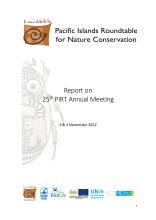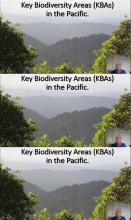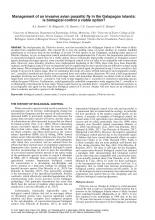Management of an invasive avian parasitic fly in the Galapagos Islands: is biological control a viable option?


Island and Ocean Ecosystems, BRB
Available Online
The bird-parasitic ?y, Philornis downsi, was ?rst recorded in the Galápagos Islands in 1964 where it likely invaded from mainland Ecuador. This muscid ?y is now the leading cause of recent declines in endemic landbird populations as its larvae feed on the nestlings of at least 19 bird species in the Galápagos, including many species of Darwins ?nches. As yet, no long-term control method has been implemented for P. downsi, but importation (also known as classical) biological control may be a viable option. Due to historically high-pro?le examples of biological control agents attacking non-target species, some consider biological control to be too risky to be compatible with conservation aims. However, since biosafety practices were implemented beginning in the 1990s, these risks have been drastically reduced, and biological control is now an important tool for suppressing invasive species that are di?cult to control using other means. We investigated the safety of a potential biological control agent, the parasitoid wasp, Conura annulifera, that attacks P. downsi in its native range. Here we summarise the results of a series of ?eld, laboratory and comparative studies on C. annulifera (methods and results are not reported here) and outline future directions. We used a ?eld experimental paradigm involving nest boxes baited with non-target hosts, and quarantine laboratory no-choice trials in which non-target hosts were exposed to C. annulifera. Our work to-date suggests that C. annulifera is restricted to attacking species within the genus Philornis. Furthermore, a phylogenetically controlled comparative study suggests that C. annulifera is evolutionarily constrained in its host range. These results lead us to conclude that C. annulifera demonstrates promise as an ecologically safe agent for the long-term biological control of P. downsi. Studies will now focus on an evaluation of risks to endemic and native species in the Galápagos.




